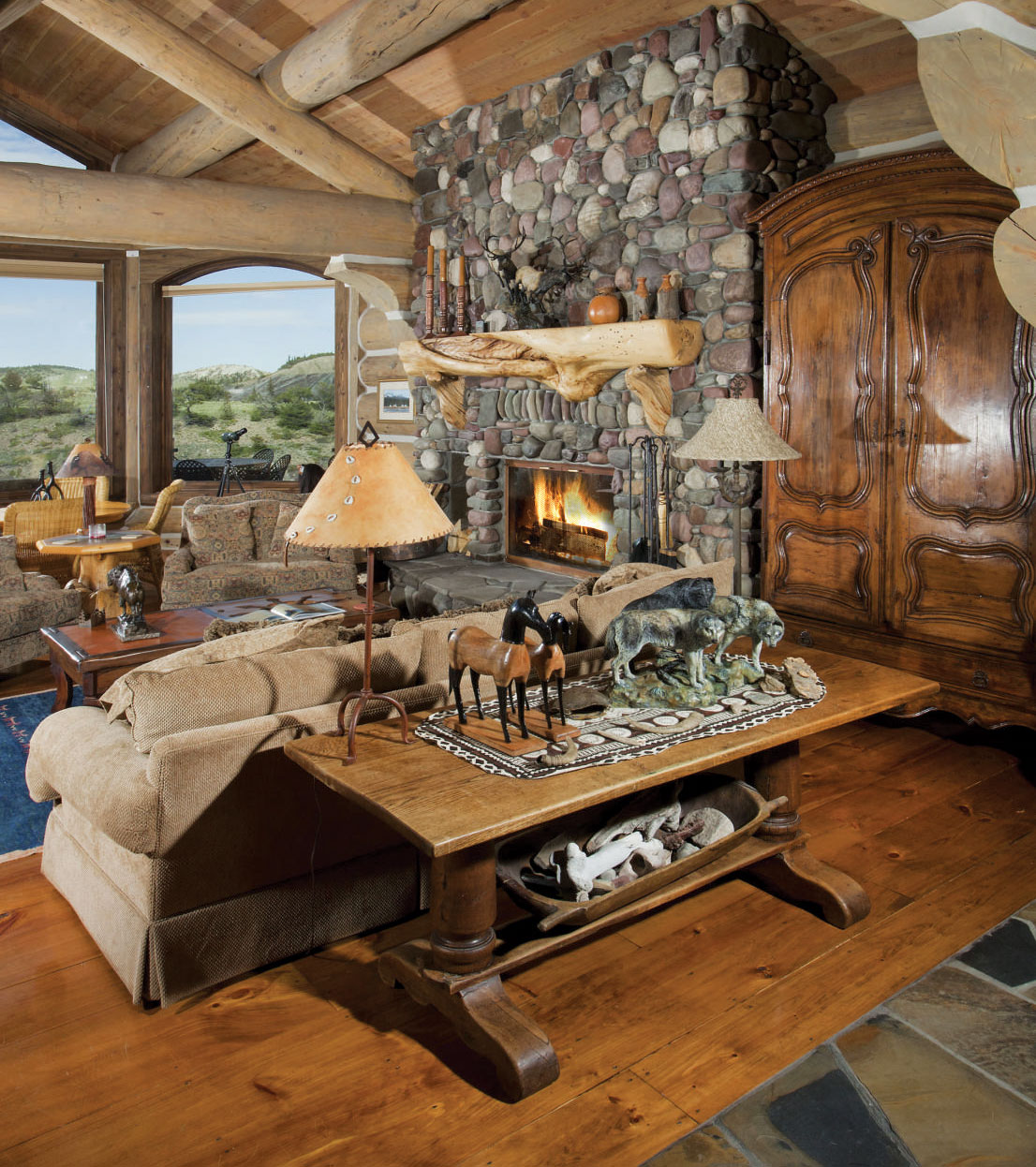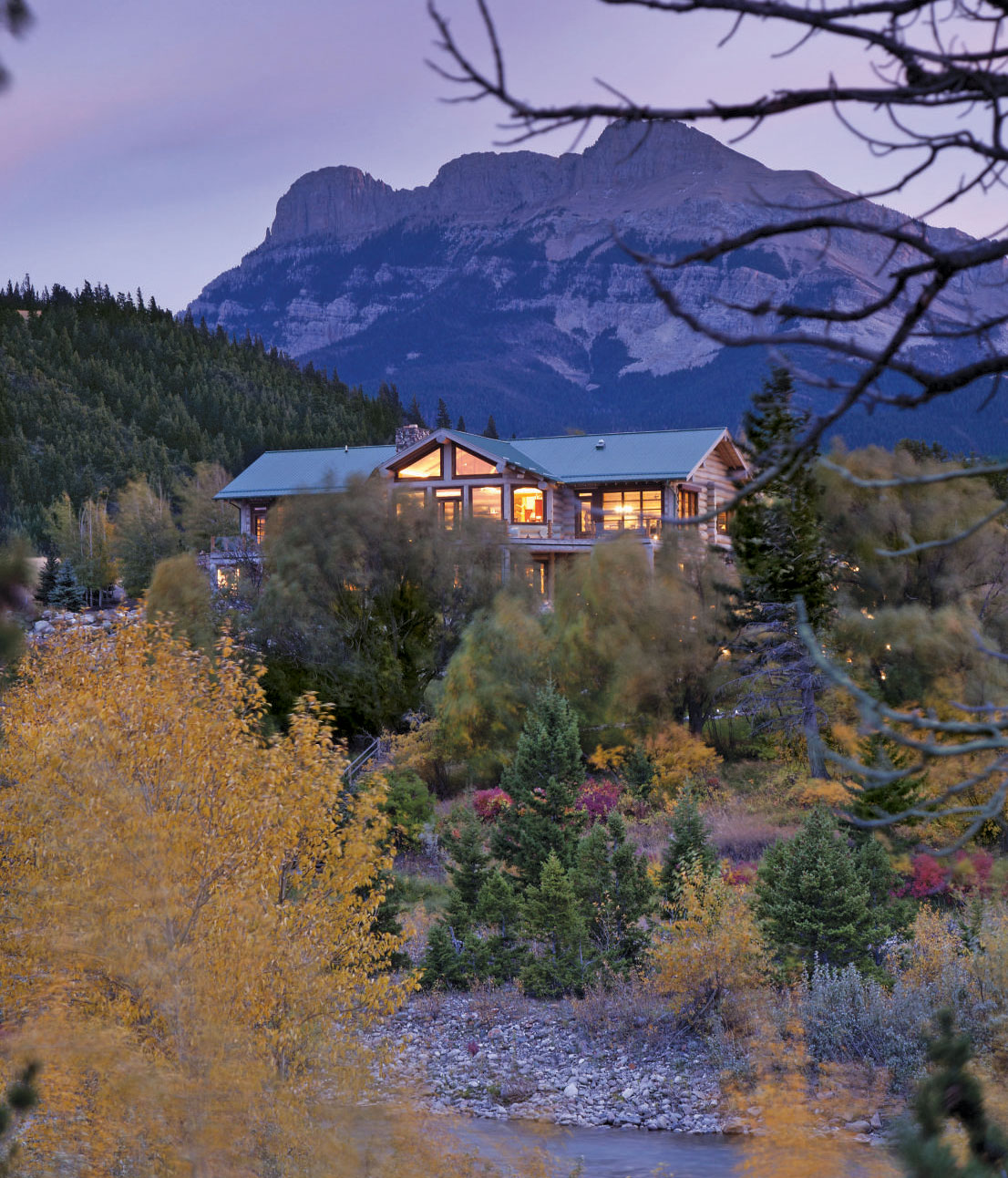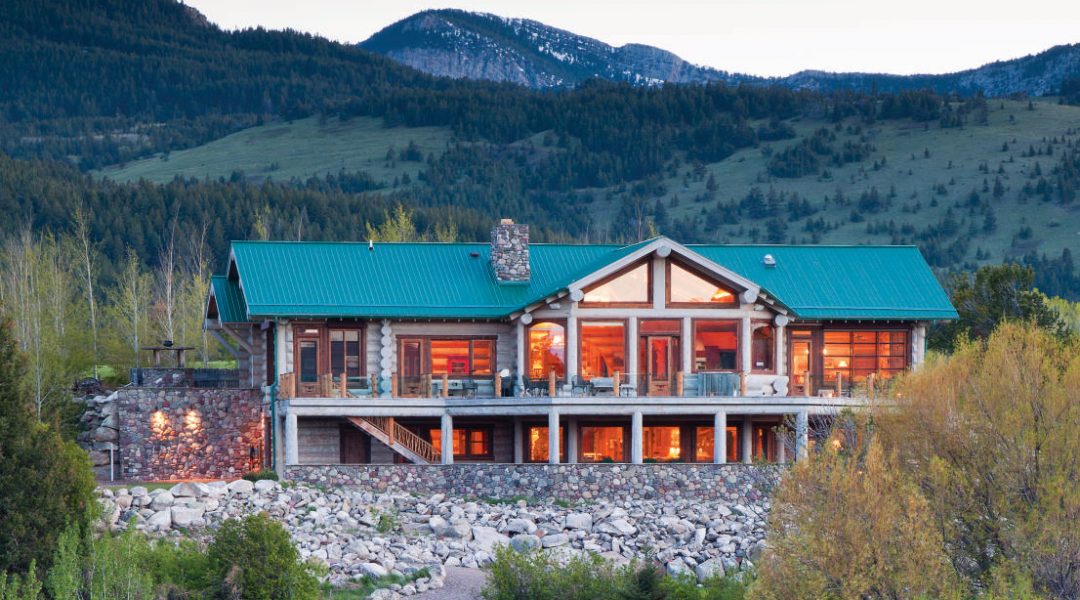A historic Montana ranch provides an important migration corridor for indigenous wildlife.
“Welcome to Sun River Ranch — it’s like no other place on earth,” says Larry Wilson, proudly — and accurately — introducing his private ranch retreat. Spanning more than 3,000 acres across the heart of Montana, the property sits at the base of the Rocky Mountain Front, shadowed by rugged mountain-tops. To the west, the jagged peaks of the Bob Marshall Wilderness Complex rise sharply from the ranch boundary. Encompassing more than 1 million acres, the primitive wilderness area provides a critical habitat for grizzly and black bears, elk, moose, deer, bighorn sheep, wolves, and mountain goats. “There are more animals indigenous to the northern Rockies here on the eastern front than anywhere else in the world,” Wilson notes.
In the winter, huge herds of elk and bighorn sheep descend from the high country onto the Sun River Ranch and the adjacent Sun River Game Range to forage on the plains. “It’s an ancient and important migration corridor, and one of the main reasons I purchased the ranch,” says Wilson, who has placed a conservation easement on the property to protect the migratory path.

An avid outdoorsman, Wilson and his wife first moved to Whitefish, Montana, to escape the growth that was enveloping his home state of Arizona. As the population of Whitefish increased, the couple moved once again, this time to a horse ranch near Bigfork, before settling on Sun River Ranch. “I had been looking for a large ranch property when I got a call from my friend Tom Brokaw, who said that the Sun River Ranch was on the market,” Wilson recounts. Intrigued, he arranged to visit the property. “What I found was incredible — I bought it the first day I saw it.”
Overgrazed with a scattering of historic buildings in various states of disrepair, the property was sorely in need of care. Wilson quickly set about restoring the ranch land and its original structures, and spent time exploring the property on foot and horseback, scouting for the best place to build a ranch home and outbuildings. After considering his options, he finally decided to incorporate the trout-filled river that winds through the center of the land.
Originally called the Medicine River by indigenous Native Americans, the Sun River is steeped in history. In 1806, Meriwether Lewis and William Clark parted ways while making their return trek through Montana; Lewis’ party journeyed east across the high plains and stopped to camp on an island in the Medicine River. The early explorer’s written descriptions of regional landmarks seem remarkably similar to features found on the property today, leading Wilson to conclude, “When you read Lewis’ journal, there’s no doubt in my mind he camped on this ranch.”
Ultimately, Wilson chose a protected rise overlooking the river for the homesite and began collaborating with local architect George Gibson on the layout. “The design stems from the land,” says Gibson. “This is a big landscape with dramatic peaks, expansive grasslands, and abundant river rock. It was important that the home reflect those elements.” The residence was constructed using massive logs, and the exterior wood was stained gray to imitate a natural, aged patina. “From every vantage point, the home looks as though it has been here for a very long time, which is exactly what we intended,” Wilson says. Inside, exposed rafters and thick chinking add to the timelessness of the traditional construction.
Far from feeling rustic, the interior living space is warm and inviting. With a wall of windows looking out at the river and sprawling landscape, the great room is flanked on one side by a spectacular river-rock fireplace on which a cut-and-polished gnarled log serves as a unique mantel. “I happened to find that log along the riverbed. It probably washed down the river in the big flood of 1964,” notes Wilson.
Next to the great room, the kitchen opens brightly; and along the exterior wall, countertop-level cabinets provide ample storage without obstructing the expansive view. In keeping with the desired historic character, several layers of yellow and red stain were carefully applied to the cabinetry to give it an aged effect. “I did a lot of research to figure out how to achieve that look,” Wilson says.
Off the kitchen, the dining room likewise offers sweeping views of the ranch. The owners wanted the room to be a screened-in porch, but because the wind can blow wildly, they had to come up with an alternative option. “As the plans developed, I noted there was extra space between the ceiling of the dining room and the room above it,” says Wilson. “So I had the builder install screens in the windows and then install retractable garage doors with glass panels along the exterior.” In nice weather, the glass panels can be raised leaving the large screened windows open on two sides.

The rest of the ranch boasts several historic buildings that the owners have thoughtfully restored, one of them being a one-room cabin originally owned by the initial homesteader, Bruce Neal, whose expertise and knowledge of the area was legendary. In 1948, as Montana’s game warden, Neal helped establish the Sun River Game Range — a 19,000-acre preserve that became the state’s first winter game range. Sitting high above the main house, the cabin now serves as a beautiful private retreat for ranch guests with a modern bathroom and heated floor.
Two more cabins stand close to the river roughly three miles from the main house. Known as “line camps,” these simple structures were typically stocked with food and equipped with single beds. They provided shelter to ranch workers, who would stay in these cabins while out working cattle or repairing fences instead of riding back and forth to the main house. The Wilsons opted to also renovate the two line camp cabins, installing a gravity flow water tank and a separate yet easily accessible bathhouse. They also built a large gazebo, which encompasses an outdoor kitchen, sizeable tables, and a fire pit. “It’s a perfect place for a lunch respite if we’re out fishing,” says Wilson. “Sometimes we even stay overnight and build a big fire in the fire pit — the grandkids love that.”
For Larry Wilson, the Sun River Ranch is the epitome of a decades-long commitment to conservation. “This is the continuation of a legacy, for future generations of people and wildlife.”
From the September 2012 issue.



















